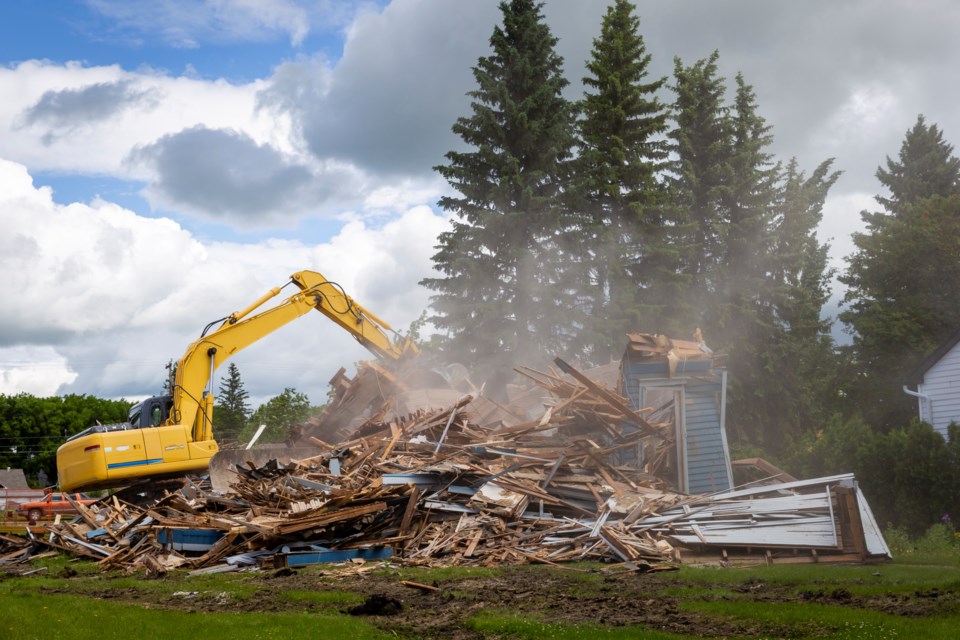The Resort Municipality of Whistler (RMOW) and District of Squamish are collaborating with the non-profit Community Energy Association (CEA) on an embodied carbon guide that could benefit all municipalities in B.C.
Whistler council heard a presentation on the project from climate action coordinator Luisa Burhenne at its Sept. 21 meeting.
“Embodied carbon emissions, most of them happen before the building is operational, or thereafter, and they can make up to 50 per cent of the building’s whole lifecycle emissions,” Burhenne said. “So they are huge, and they happen in only a short amount of time.”
Embodied emissions refer mainly to emissions related to the manufacturing of products and services—the extraction and transport of raw material, or production and transportation of building materials, for example.
“And then in the end, after the building has finished its lifecycle, demolishing the building and getting rid of the waste [are considered embodied emissions],’ Burhenne said.
“So there are many opportunities here where we can tackle those embodied carbon emissions.”
In collaboration with the District of Squamish, RMOW staff submitted a joint expression of interest to the CEA’s Game-Changer Grant Program, which will provide about 440 hours of the CEA’s senior professional staff time to help build an embodied emissions guide for municipalities.
Total RMOW staff time for the two-year project is not expected to surpass 126 hours.
The work will include “doing some of the math” and research to dial in on where municipalities can have the greatest effect, as well as stakeholder interviews to ensure the guide works for the community, said Dale Littlejohn, CEO of the CEA.
“And then there is the art and science of drafting policy—so what the legal powers of the municipality are, and exactly how you leverage those for the maximum impact, and avoid as much as possible unintended consequences,” Littlejohn said.
The guide itself will distil all the insights and experience gleaned through the process to be used by other municipalities, he added.
While it’s too early to tell at this stage how the guide will impact policy making, or what affect it will have on builders, “we’re going to explore a variety of options,” Littlejohn said.
“We’re going to look at opportunities around deconstruction to help ensure that, when we tear down a building, as much of that gets recycled as is practically possible.”
The work will also take into account decisions made by the municipalities themselves on things like materials purchased.
“Part of the research that we’re doing is not just math on emissions, but it’s also looking at the costing side of things, and what impacts these things will have on costs and how that plays into everything,” Littlejohn said.
While he supported the research, Councillor Duane Jackson expressed concern about “going down the rabbit hole on all sorts of things” at the Sept. 21 meeting.
“You can pour concrete here, but you can buy a cement-based siding that’s made on the other side of the world and shipped here, and then who’s going to calculate that difference, and is that going to be on the building permit application?” he said, noting that the embodied carbon makeup of any given project could include concrete, siding, wood, insulation, plumbing, electrical, roofing and more.
“So there has to be some simple fundamentals that the industry can learn from this process … I can see this being a really complex topic,” Jackson said.
“How do you see this working out for the industry?”
Burhenne agreed that the guide should favour practicality over fine details.
“It doesn’t matter if it’s [off by] one or two grams of CO2 over the lifecycle of a building ... it matters that it’s practical, that we know where the big ticket items are, and how a municipality can easily implement change and how the industry can do the same,” she said.
“That’s why we say it’s a guide for B.C. municipalities … there’s a lot of research out there, a lot of detailed analyses on different materials—we want to hire the CEA to gather all of that information and have a couple of high-level scenarios and decision-making tools.”




